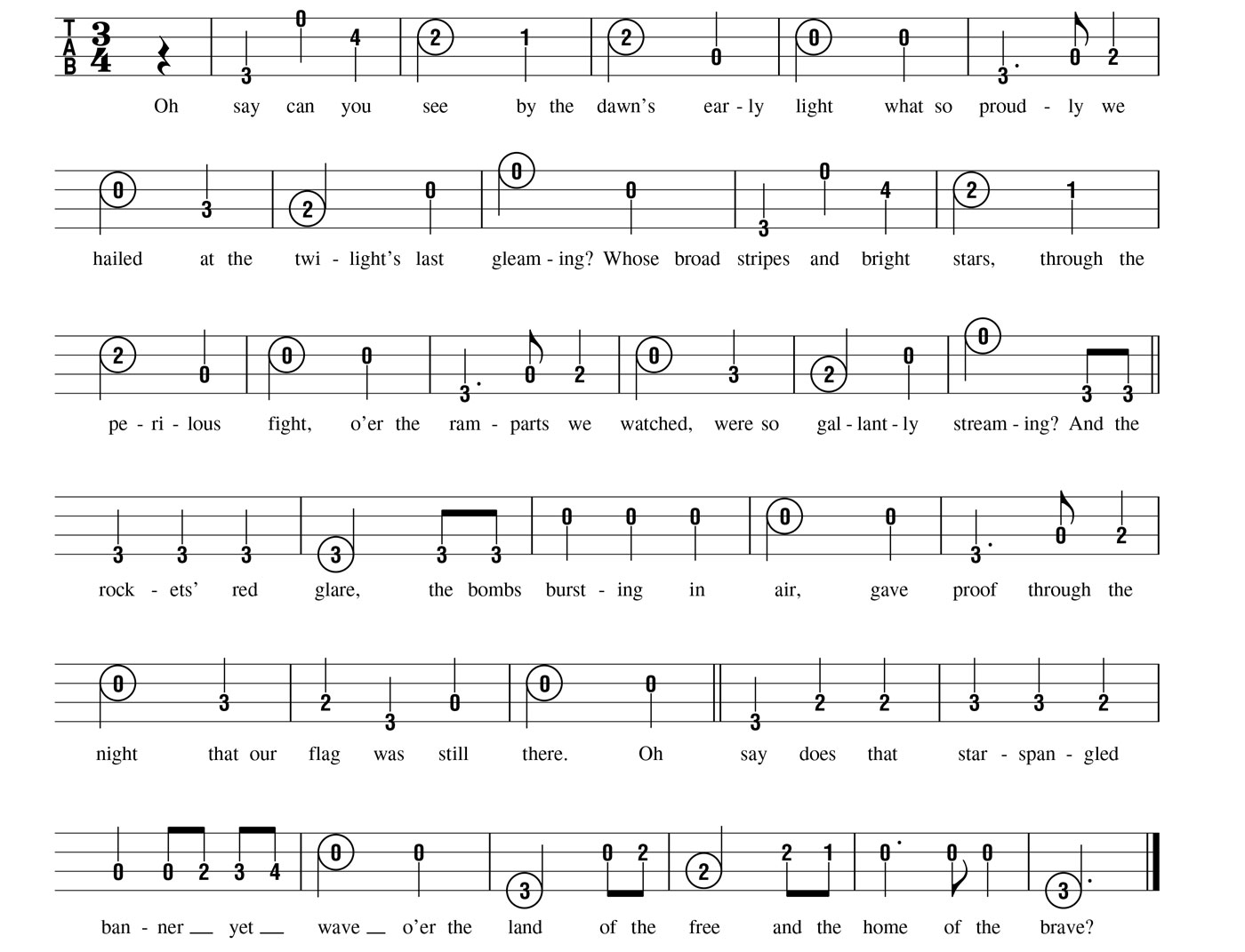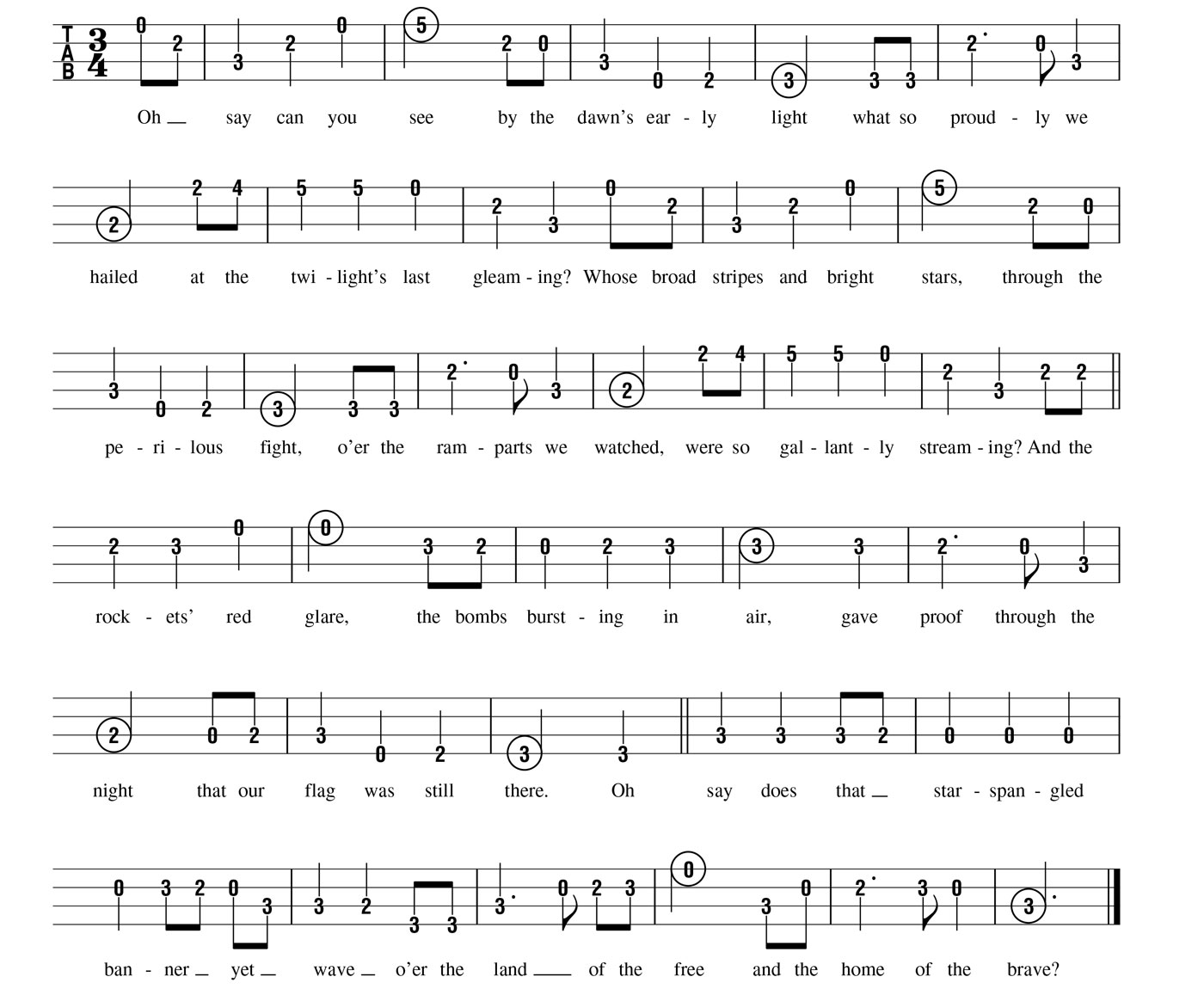Chapter 9
Major and Minor Scales
Now let’s flesh out our five-note pentatonic scales and learn the full, seven-note major and minor scales. We briefly looked at the majors on paper (page 28), but now we’ll learn how to play a few of them. Major and minor scales are by far the two most common in all of Western music.
G Major Scale
We’ll play the G major scale in open position, but we’ll have to learn one new note, F. Remember from page 28 that the key signature for G major is one sharp: F. (The extra notes below the root, open E and F, and above the octave, A and B, are included because they’re accessible in this form.)
G Major Scale in Open Position

Those half steps (the distance of one fret) can be used to great effect as lower-neighbor tones in grooves like this:
Example 45

C Major Scale
As with the C major pentatonic scale, we’ll play this one in second position (first finger on second fret). Even though it uses some open strings, the scale ends up at fret 5 and we don’t need to play fret 1. (The notes below the root are included because they’re accessible in this form; you will have to shift down a fret for the F note on fret 1, string 4.)
C Major Scale in Open/Second Position

Let’s check out the C major scale in use. Note that this one’s in 3/4 time. The little scale runs in measures 4 and 10 are extremely common.
Example 46

E Minor Scale
Now let’s turn to the dark side with the E minor scale in open position. Again, as with the pentatonic version, this will bear great resemblance to the G major scale—the only difference being which note we treat as the tonic. (The notes above the octave are included because they’re accessible within this form.)
E Minor Scale in Open Position

Now let’s check out the E minor scale in action. We’re using some passing tones here—notes that we pass through on the way to another destination note.
Example 47

A Minor Scale
Here’s the A minor scale in open position, which looks just like the E minor scale, only one string over. The notes below the root are included because they’re accessible within this form.
A Minor Scale in Open Position.

Here’s the A minor scale in a groove. Note that this is essentially just a descending minor scale, but we’re phrasing it in such a way that it creates a nice bass line. Remember to observe the rests!
Example 48

Just as we did with the major scales on page 28, all 12 minor scales are listed here for reference:
The 12 Minor Scales
A Minor: A–B–C–D–E–F–G |
D Minor: D–E–F–G–A–B–C |
E Minor: E–F–G–A–B–C–D |
G Minor: G–A–B–C–D–E–F |
B Minor: B–C–D–E–F–G–A |
C Minor: C–D–E–F–G–A–Bb |
F Minor: F–G–A–B–C–D–E |
F Minor: F–G–A–B–C–D–Eb |
C Minor: C–D–E–F–G–A–B |
Bb Minor: B–C–D–E–F–G–Ab |
G Minor: G–A–B–C–D–E–F |
Eb Minor: E–F–G–A–B–C–Db |
Song 10: The Star Spangled Banner (Bass Line in G)
Are you ready to do your country proud? Here, we’ll tackle a bass line to the “Star Spangled Banner” in the key of G. Every note here comes from the G major scale, with the exception of two: D/Eb on fret 1, string 2 and C on fret 4, string 3. So be on the lookout for those notes, and be sure to stop any open strings (namely, the D string) from ringing out longer than it’s supposed to.
Example 49
The Star Spangled Banner (Bass Line in G)

Song 11: The Star Spangled Banner (Melody in C)
Now we’ll play the melody to the “Star Spangled Banner” on the bass. We’ll transpose it to the key of C to better fit the range of our bass, and we’ll have to transpose a few phrases to a different octave (the song has quite a range!), as well, but the essence will remain. The only note here that’s not in the C major scale is the F on fret 2, string 4, which appears in measures 3, 11, and 23. You can play this entire song comfortably in second position.
Example 50
The Star Spangled Banner (Melody in C)
